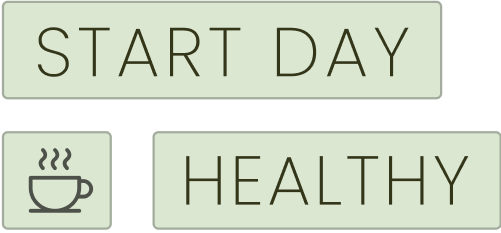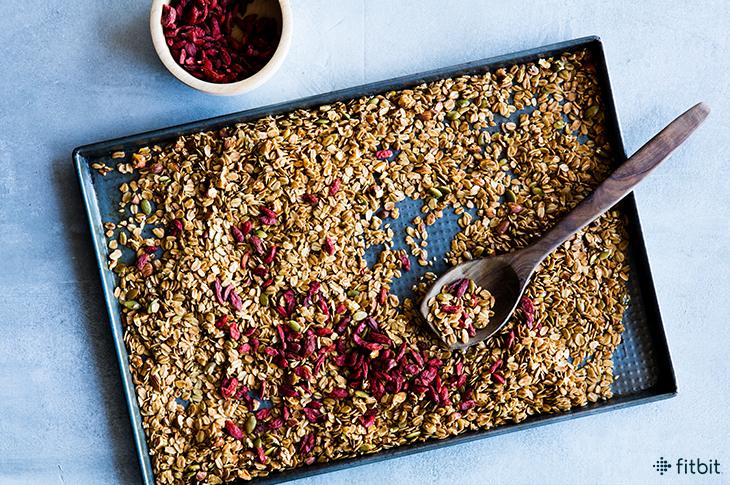Preventing heart disease means more than avoiding saturated fat, cholesterol, and sodium. It’s also about what you should be eating more of. Take fiber, for instance. “Fiber should be the first thing you think of getting more of for heart health,” says Libby Mills, MS, RD, a nutritionist in Philadelphia, PA.
Getting the fiber you need is easier—and tastier—than you might think. Here’s how to effortlessly up your fiber game and give your heart some love in the process.
Aim high. Think of fiber as a nutritional jack of all trades. On top of keeping your heart happy, this multitasking nutrient helps control blood sugar, keeps your digestive system regular, and fills you up, so you automatically eat less. That’s good news. The National Academy of Sciences recommends women consume foods that provide about an ounce (25 grams) of fiber daily and a third more for men (38 grams).
Why? Fiber is naturally present in whole, minimally processed foods such as fruits, vegetables, beans, and whole grains. When we eat more ultra-processed foods, like chicken nuggets, deli meats, salty snacks, cake, and cookies, we risk not consuming enough fiber.
Mix things up. Fiber may sound like it’s one thing. In reality, there are several types of fiber and they each appear to support heart health in distinct ways. So, it’s key to eat lots of different foods to get a variety of types of fiber.
For the most part, fiber falls into two general camps: soluble and insoluble. Soluble fiber, which is commonly found in foods like beans, oats, barley, apples, and pears, works like a sponge, helping to trap blood cholesterol-raising fats like saturated and Trans fats before they can enter your body.
And that neat trick is just the beginning. “By slowing down digestion, soluble fiber can also prevent spikes in blood sugar which can elevate triglycerides and cause damage to blood vessels,” adds Mills.
Insoluble fiber is no slouch either. Found in foods like bran cereal and whole-wheat bread and pasta, insoluble fiber’s claim to fame is keeping your digestive system regular. But it can also do good things for your ticker. Because insoluble fiber provides a natural way to feel full after eating, it may also help you eat less, which in the long term can support maintaining a healthy body weight, and in turn translates to less strain on your heart. In fact, research has found that for every 7 daily grams of insoluble fiber a person eats, their risk of developing heart disease drops by 18 percent.
Get the best of both worlds. If you can’t be bothered to keep tabs on whether you’re eating enough soluble and insoluble fiber, we hear you! Luckily there’s one quick, convenient type of fiber that delivers both kinds, namely whole grain fiber. If you’ve never heard of whole grain fiber, it’s essentially the bran of the grain kernel, and it is rich in—you guessed it—whole grain cereals.
And according to a new study, eating an additional 5 grams of whole grain fiber to your daily diet may trim your risk of developing heart disease by 10 percent. The American Heart Association recommends making half your grains whole grains.
Of course, you can always wolf down a big bowl of whole-grain cereal. But why stop there? If you’d like to harness the power of this helpful whole grain fiber, try these tips.
Blend ¼ cup quinoa flakes into your favorite smoothie.
For a crunchy spin on French toast, dust a slice of egg-dipped whole wheat bread with crushed, unsweetened whole grain cereal before cooking and serve with fresh fruit.
Roll energy balls in puffed brown rice.
Toss whole-grain cereal squares with tart-dried cherries and almonds for a sweet and savory snack mix.
Whip up a batch of Super Seed Granola.
Swap in crushed toasted oat cereal for breadcrumbs next time you make chicken nuggets or fish fingers.
Remember to add more fiber-rich foods to your diet, along with balancing your calories to maintain a healthy body weight, limiting saturated and Trans fats, and reducing excess salt and sodium.
The post The Heart-Healthy Carb that You Need Now appeared first on Fitbit Blog.

